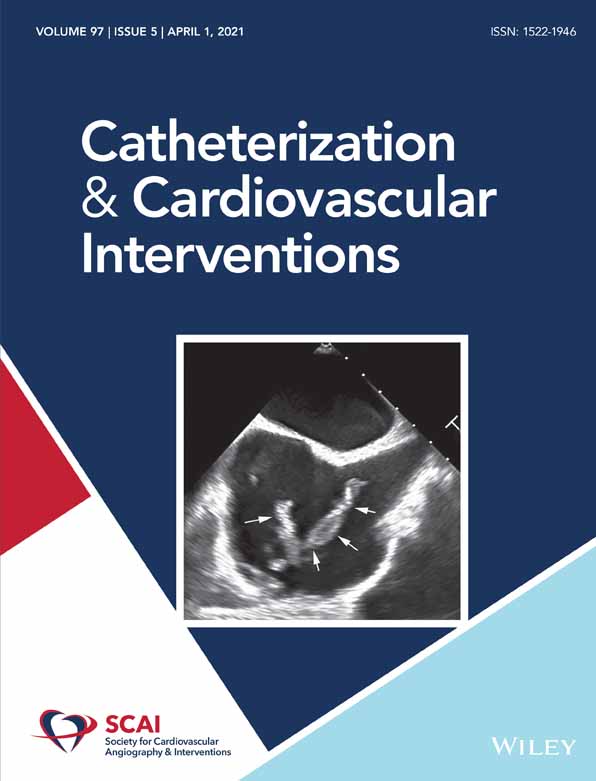Sex-stratified analysis of the safety of percutaneous left atrial appendage occlusion
Abstract
Objectives and Background
There is insufficient current evidence about whether sex impacts outcomes of percutaneous left atrial appendage occlusion (LAAO). The aim of this study was to investigate the association between sex and short-term outcomes of LAAO.
Methods
Patients who were hospitalized and underwent LAAO from October 2015 to December 2017 in the National Readmission Database were queried. The primary endpoint of interest was major in-hospital adverse events. Secondary endpoints included, 30-day readmission rate, nonhome discharge, and cost of hospitalization. Propensity score matching (1:1) was performed to compare the outcomes among women and men.
Results
A total of 9,281 patients were included in the current analysis [women = 3,659 (39%); men = 5,622 (61%)]. Comparing women to men, women had lower prevalence of diabetes mellitus (30.6% vs 35.7%, p < .01), heart failure (28.6% vs 30.8%, p = .03), vascular disease (55.5% vs 69.6%, p < .01) and renal failure (18.3% vs 21.2%, p < .01), and higher CHA2DS2VASc score (5 [IQR4-6] vs 4 [IQR3-6], p < .01). After propensity-score matching, women had higher rate of major in-hospital adverse events (2.8% vs 1.9%; p < .01), and nonhome discharges (11.4% vs 6.7%; p < .01). Additionally, 30-day readmission rate was higher among women (10% vs 8.6%, p = .03).
Conclusion
Among hospitalized patients undergoing LAAO, women carry higher risk for major in-hospital adverse events, nonhome discharge, and 30-day readmission rates.
CONFLICT OF INTEREST
The authors declare no potential conflict of interest.
Open Research
DATA AVAILABILITY STATEMENT
The data that support the findings of this study are available from the corresponding author upon reasonable request.




